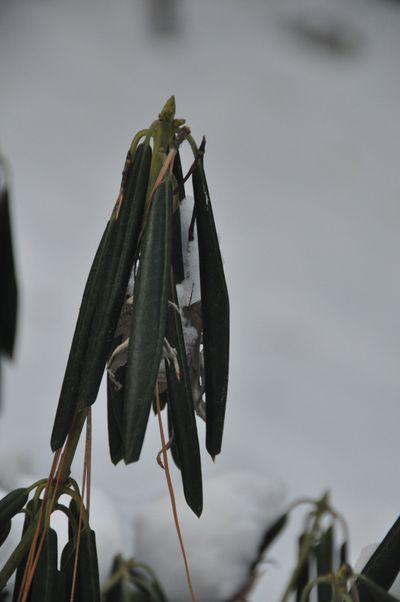This column reflects the opinion of the writer. Learn about the differences between a news story and an opinion column.
Gardening: Plants prepare for bitter cold

Before I dive into this week’s topic on how plants survive the cold, I want to give an update on my hydroponic experiment.
A month into it, all but one pod sprouted, which is good by my standards. Seeds don’t always sprout. The dill came first, followed by several basil plants and then the parsley, chives and mint. All have reasonable vigor. The water tank only needed one topping off early last week and I’m adding the nutrient solution every two weeks. The dill is big enough to harvest and the parsley isn’t far behind it.
Now to how plants survive the cold. So far, winter has been in whiplash mode. Last week, I had minus 9 in my garden and this week is above freezing. Last week was the coldest weather we’d had since 2010. This is within the tolerances of our USDA Zone 6, which says plants rated to this zone are hardy to at least 10 below zero. The tricky part is when the wind chill factor comes into play. It can damage or kill otherwise hardy plants.
The first thing our plants have in their favor now is the snow cover. I have over a foot of snow in my yard that is insulating the roots and lower stems from the cold. If you are on the short side of the snow, shovel a mound around plants like roses and butterfly bushes for extra protection.
To further protect themselves, plants have gone through a dormancy process that has prepared them for the cold. When the light and temperature levels drop after the autumn equinox, the trees begin to move water and nutrients from their leaves and stems down into the roots. They shed their leaves as part of this process. This year, however, the leaves were killed by the early cold, which had the same effect. With the extra water removed from the stems, the plant cells are not as likely to freeze and burst if they do. Water expands when it freezes and that breaks cell walls and kills the plant. Water and nutrients are drawn down into the deep roots of the plant where the ground is warmer and that adds protection. Once it warms up and the spring daylight increases, the process reverses.
So, what about evergreen shrubs and conifers? Most evergreens go through the same dormancy process but keep their needles. The exception locally are tamarack and dawn redwood trees that shed their needles. Otherwise, conifer needles have a heavy cuticle coating that protects them from the elements, especially the wind.
Evergreen shrubs like rhododendrons, Oregon grape, hollies and kinnikinic also go through the dormancy process, but their leaves remain alive. They are more affected by deep cold combined with wind which can desiccate and kill the leaves. Fortunately, the leaves readily regrow in the spring. Uniquely, rhododendrons roll their leaves inwardly when the temperature drop below freezing; the colder it is, the tighter they roll. This protects them from wind exposure that dries out the leaves.
Correspondent Pat Munts can be reached at pat@inlandnwgardening.com.